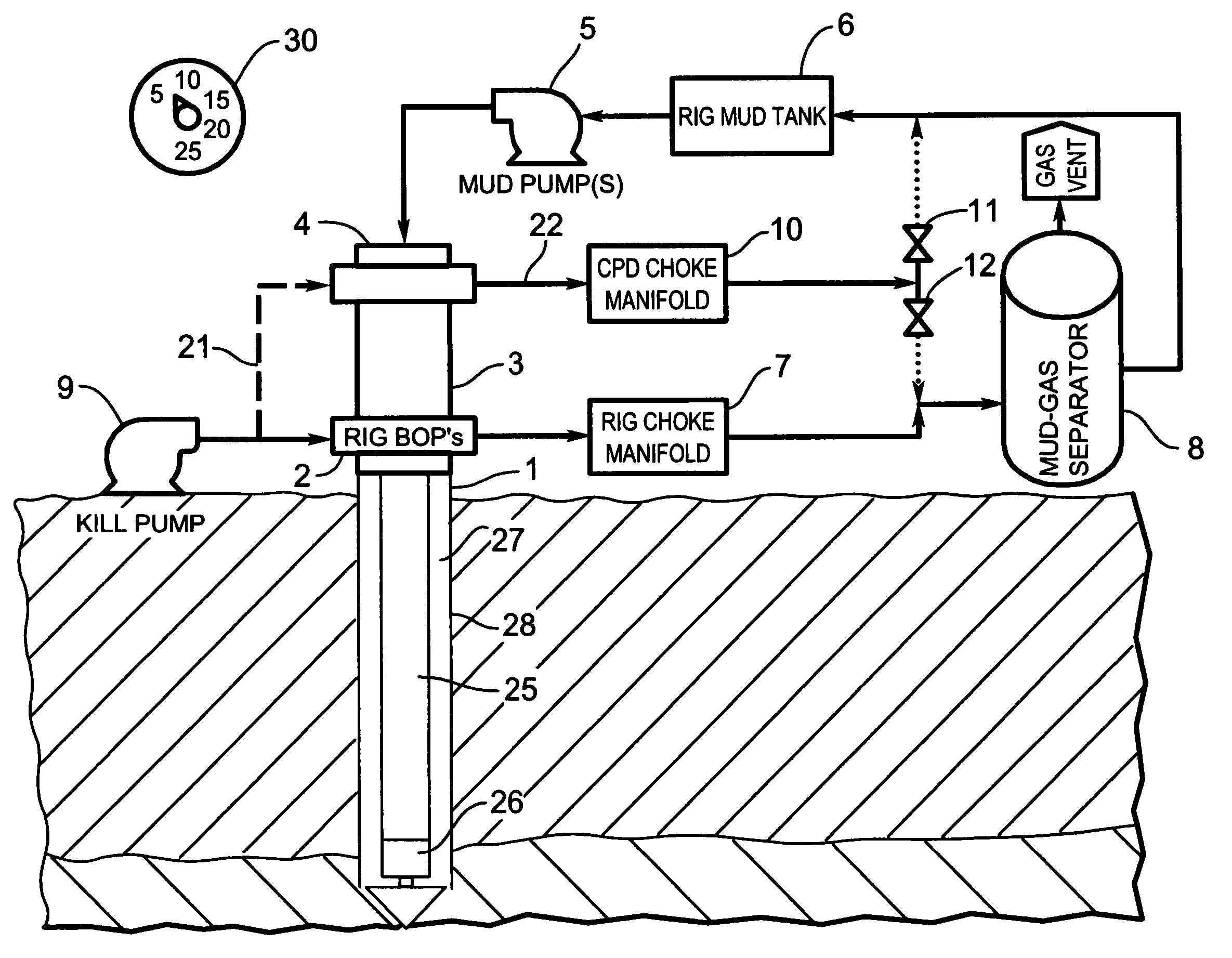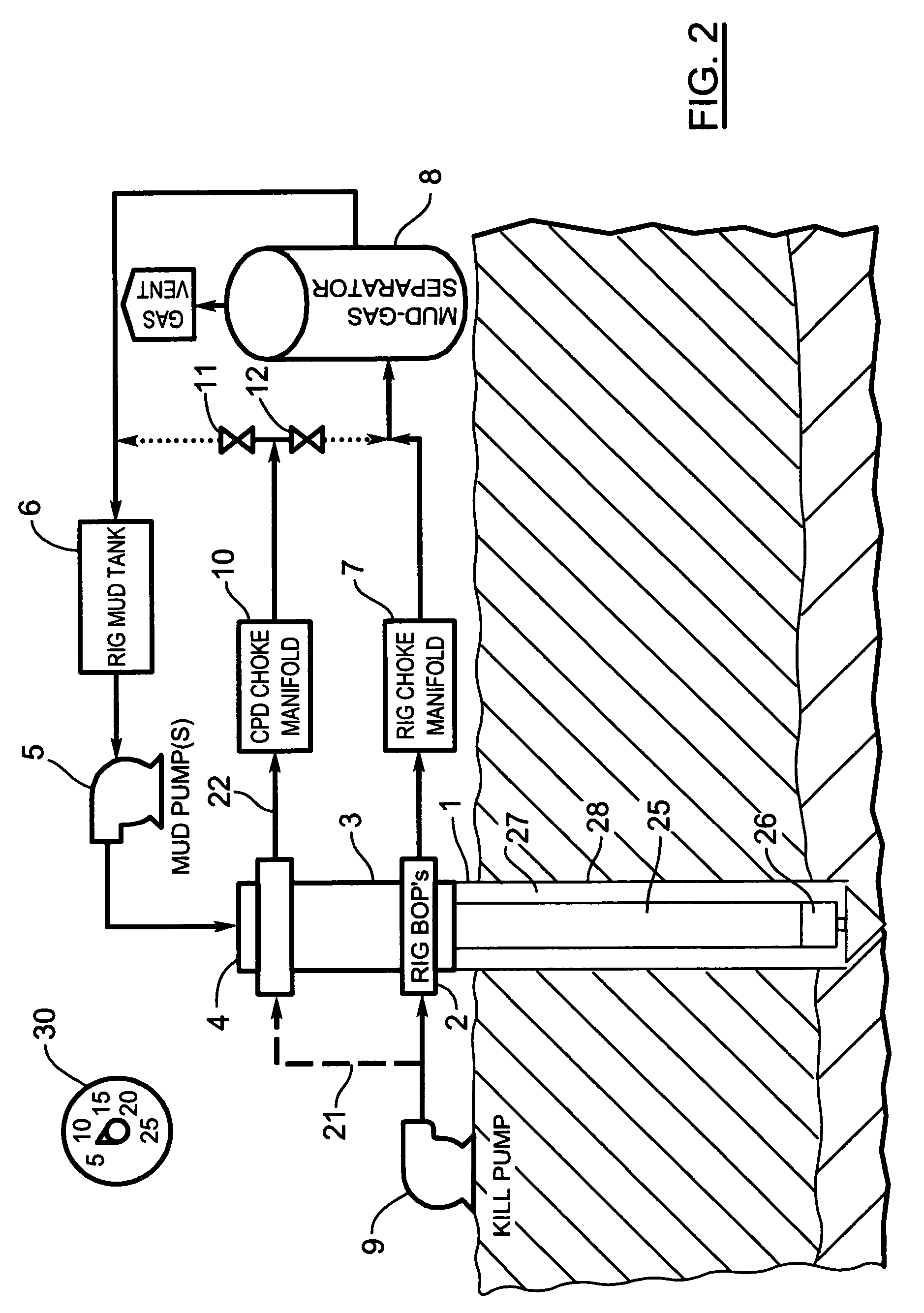Method of dynamically controlling open hole pressure in a wellbore using wellhead pressure control
a wellhead pressure control and open well technology, applied in the direction of wellbore/well accessories, earth drilling and mining, chemistry apparatus and processes, etc., can solve the problems of increasing the cost of drilling operations, overbalancing the situation, and the effect of high formation pressure on the success of only limited effects
- Summary
- Abstract
- Description
- Claims
- Application Information
AI Technical Summary
Benefits of technology
Problems solved by technology
Method used
Image
Examples
Embodiment Construction
[0026]The present invention may be embodied in a number of different forms. The specification and drawings that follow describe and disclose only some of the specific forms of the invention and are not intended to limit the scope of the invention as defined in the claims that follow herein.
[0027]The method of controlling open hole pressure according to the present invention in one aspect generally involves controlling the effective hole pressure gradient by replacing or augmenting the frictional component of hole pressure with wellhead or back pressure. Open hole pressure can be defined mathematically by the following general relationship:
POH=PHyd+PFric+PWH; where,[0028]POH is open hole pressure;[0029]PHyd is hydrostatic pressure;[0030]PFric, is friction pressure; and,[0031]PWH is wellhead pressure.
[0032]In FIG. 1 there is shown graphically the relationship between hole pressure, hydrostatic pressure, friction pressure and wellhead pressure in the case of a circulating and non-circu...
PUM
 Login to View More
Login to View More Abstract
Description
Claims
Application Information
 Login to View More
Login to View More - R&D
- Intellectual Property
- Life Sciences
- Materials
- Tech Scout
- Unparalleled Data Quality
- Higher Quality Content
- 60% Fewer Hallucinations
Browse by: Latest US Patents, China's latest patents, Technical Efficacy Thesaurus, Application Domain, Technology Topic, Popular Technical Reports.
© 2025 PatSnap. All rights reserved.Legal|Privacy policy|Modern Slavery Act Transparency Statement|Sitemap|About US| Contact US: help@patsnap.com



